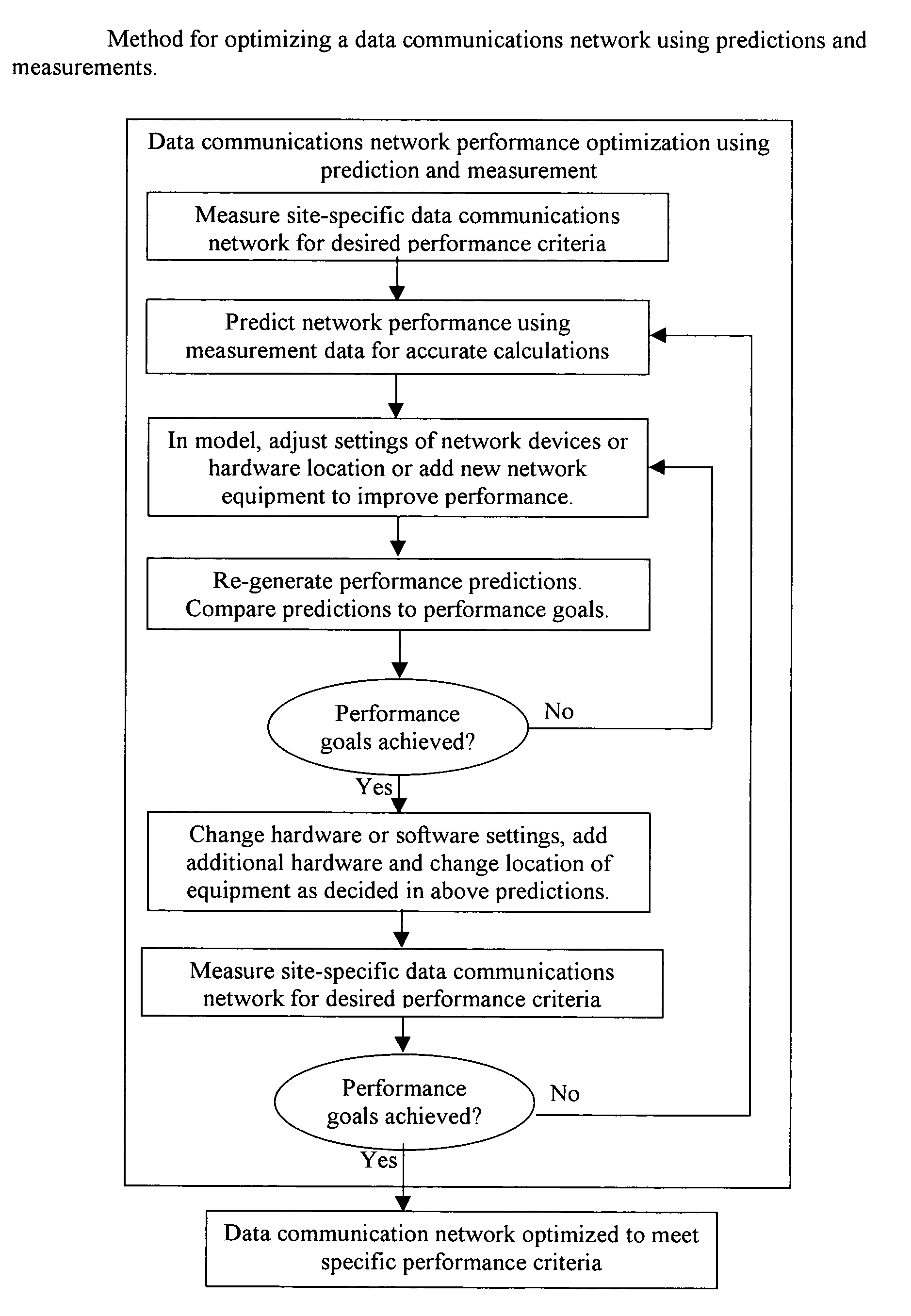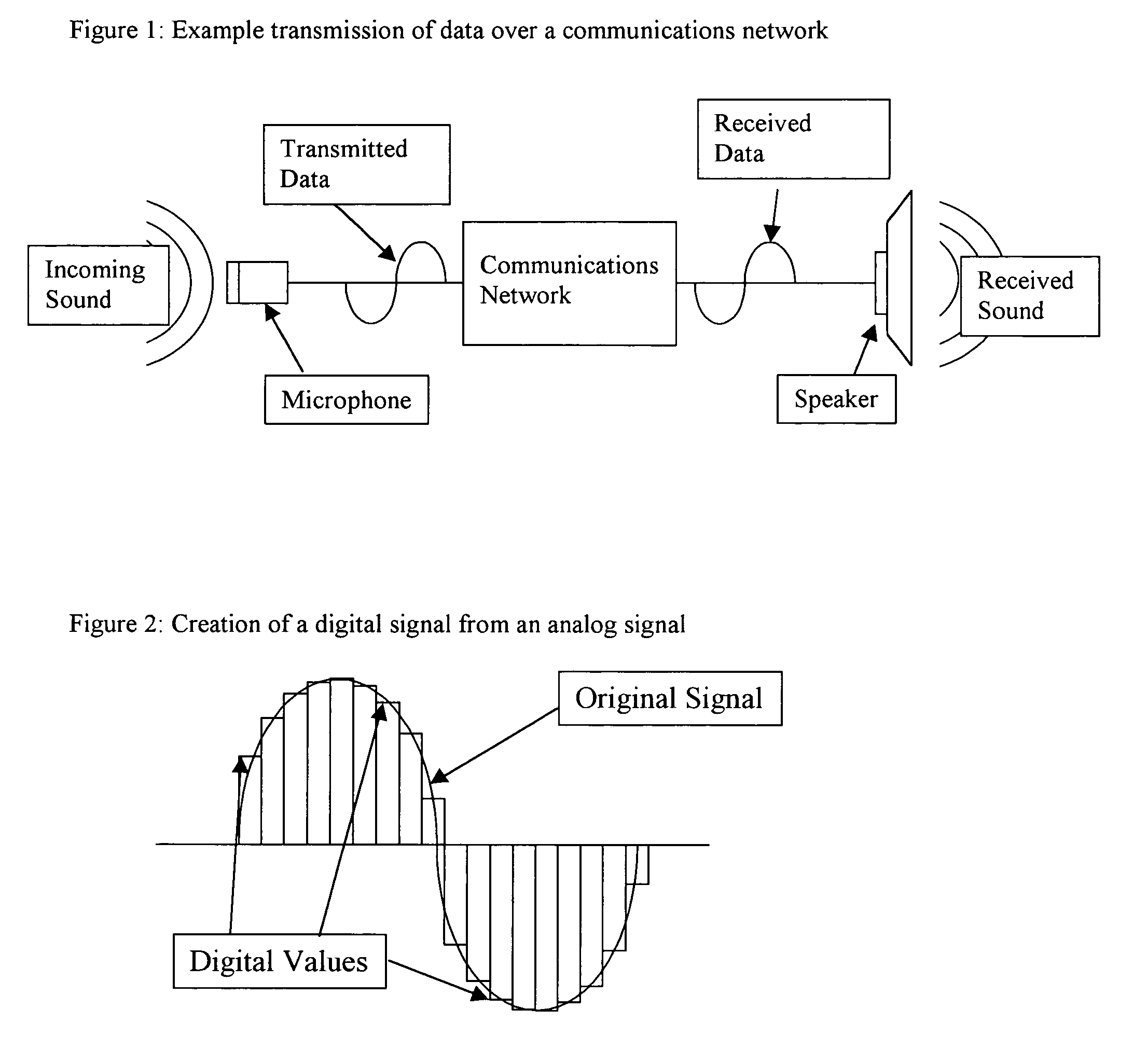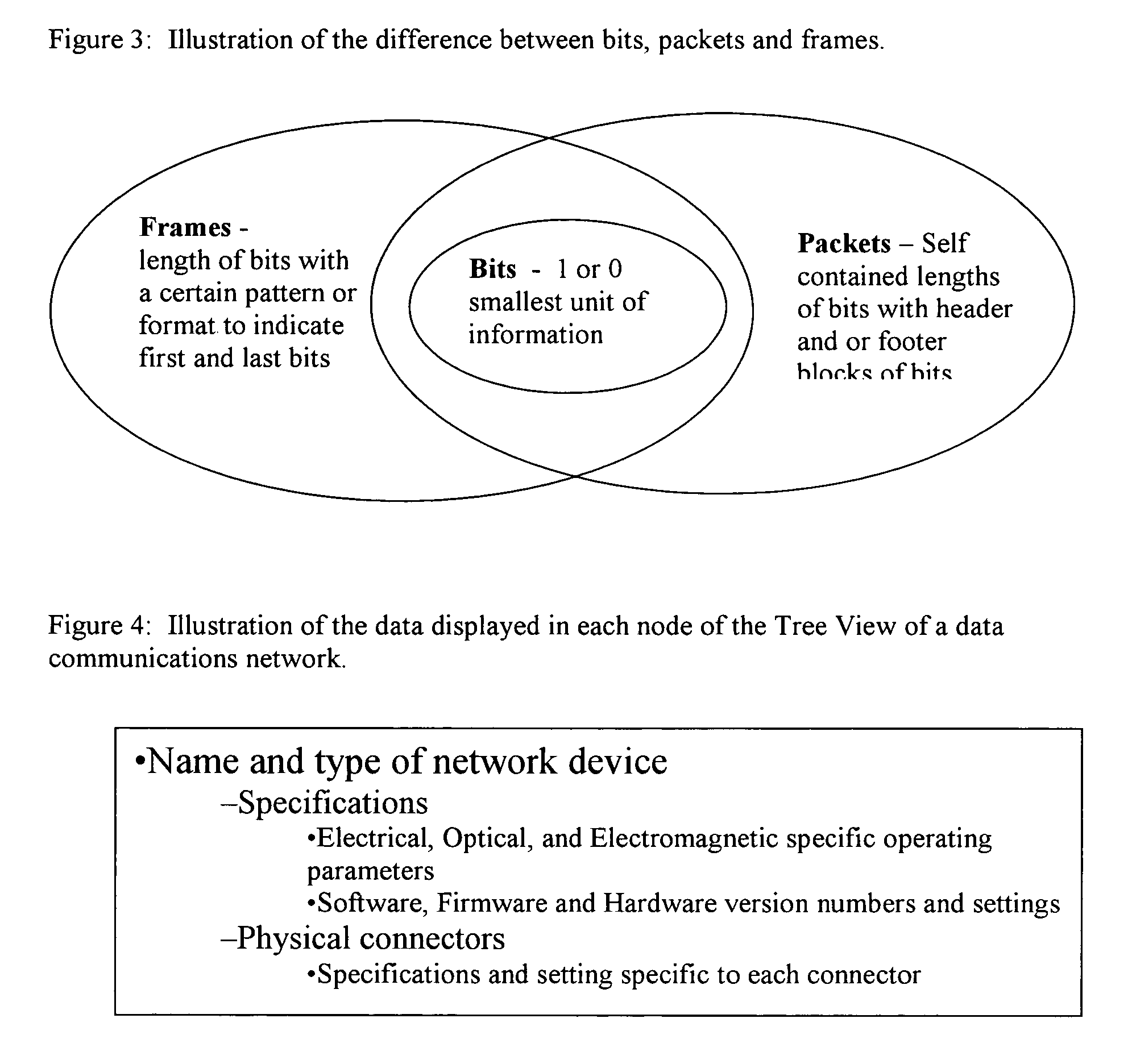While conceptually simple, the means of transmitting the data from some point A to some point B are complicated and varied in implementation.
The exact performance of a given data communication network is extremely difficult to predict or even measure because of this complexity and additionally because of the performance effects of the time varying nature of data communications networks and the channels they operate in.
A frame error rate is the percentage of frames that reach the receiver incorrectly or do not reach the receiver as compared to the number of packets sent.
Propagation delay is the time required for a packet to traverse a physical distance from the transmitter to the receiver.
Pathchar is only limited by the network hardware in the links it measures.
This means that hidden links that do not transmit acknowledgements such as Ethernet bridges can not be measured individually by pathchar.
The tool is capable of storing this data in a two dimensional geographic map or floor plan of a building, but can not track devices in a three dimensional manner.
The tool, also, does not provide network testing, measurement or monitoring features, nor does it support communication prediction or performance visualization capabilities for data communication networks.
The software products are unable to predict or measure the performance in a site-specific manner and are not capable of predicting the performance of wireless based data communication networks.
The researchers have not however presented any way to actually predict a bit error rate or throughput from the predicted delay spread profile output by a ray tracing technique.
Thus, these measurements, too, suffer from failing to measure a representative environment.
The researches did not present a model to predict their results nor did they attempt to validate any sort of computer prediction technique.
However, the results do not allow the user to predict the performance in terms of throughput or latency of a wireless LAN.
However, the prior art does not consider methods for properly modeling (e.g. predicting) the complexities that go into determining the values for actual network operating performance parameters that are simultaneously affected by multipath propagation, multiple interfering data transmissions from multiple sources, signaling protocols, equalization methods, and the like.
Predicting bit error rates, data throughput, delay, and quality of service metrics in a 3-D physical model of an actual site-specific environment is a very difficult task, and one which has not been solved heretofore, since different modem vendors have different and often-times proprietary methods for mitigating or dealing with multipath, multiple access interference, protocol type, packet size, and noise.
That is, the state of the art shows how to measure and display and make predictions for basic communication metrics but does not provide specific prediction algorithms for a wide range of important data network performance parameters in a reliable, site-specific manner.
E82-B, No. 10 Oct. 1999 has demonstrated the ability to predict the delay spread of a wireless channel and that the prediction correlates well with throughput, but the described method is not actually able to predict throughput or any other network performance criteria.
While some prior art has demonstrated the ability to track network assets in a two dimensional manner with some physical accuracy, these products have not contemplated the ability to predict future network performance for similar or different physical environments (e.g. installations).
Many products allow the measurement of network performance criteria, but no prior art has contemplated a 3-D representation of the physical environment with the physical installed base of components, for the purpose of predicting network performance parameters.
Furthermore, no tool or invention exists that can directly measure, track the assets of, predict the network performance criteria of, and visualize the network performance criteria of a data communications network in a three-dimensional site-specific manner.
Furthermore, none of the prior art has considered an invention that can perform precise, site-specific, three dimensional performance prediction of complicated network parameters using a priori measurements from an existing network, or by using the site-specific layout details of particular components within a data communications network.
Furthermore, none of the prior art has autonomously measured site-specific network performance parameters from an actual network system or subsystem using a system of agents, and then applying the specific 3-D locations and measured results of those measurement agents to create a 3-D prediction model for future network performance in the same, similar, or different physical environments.
Furthermore, none of the prior art has developed a hierarchical system of measurement and prediction engines, that have the ability to measure network performance parameters in the field and have the ability to produce a predictive engine for network performance parameters that can be shared with remote prediction engines, for the purpose of measuring and predicting network performance in a 3-D site-specific manner.
 Login to View More
Login to View More  Login to View More
Login to View More 


